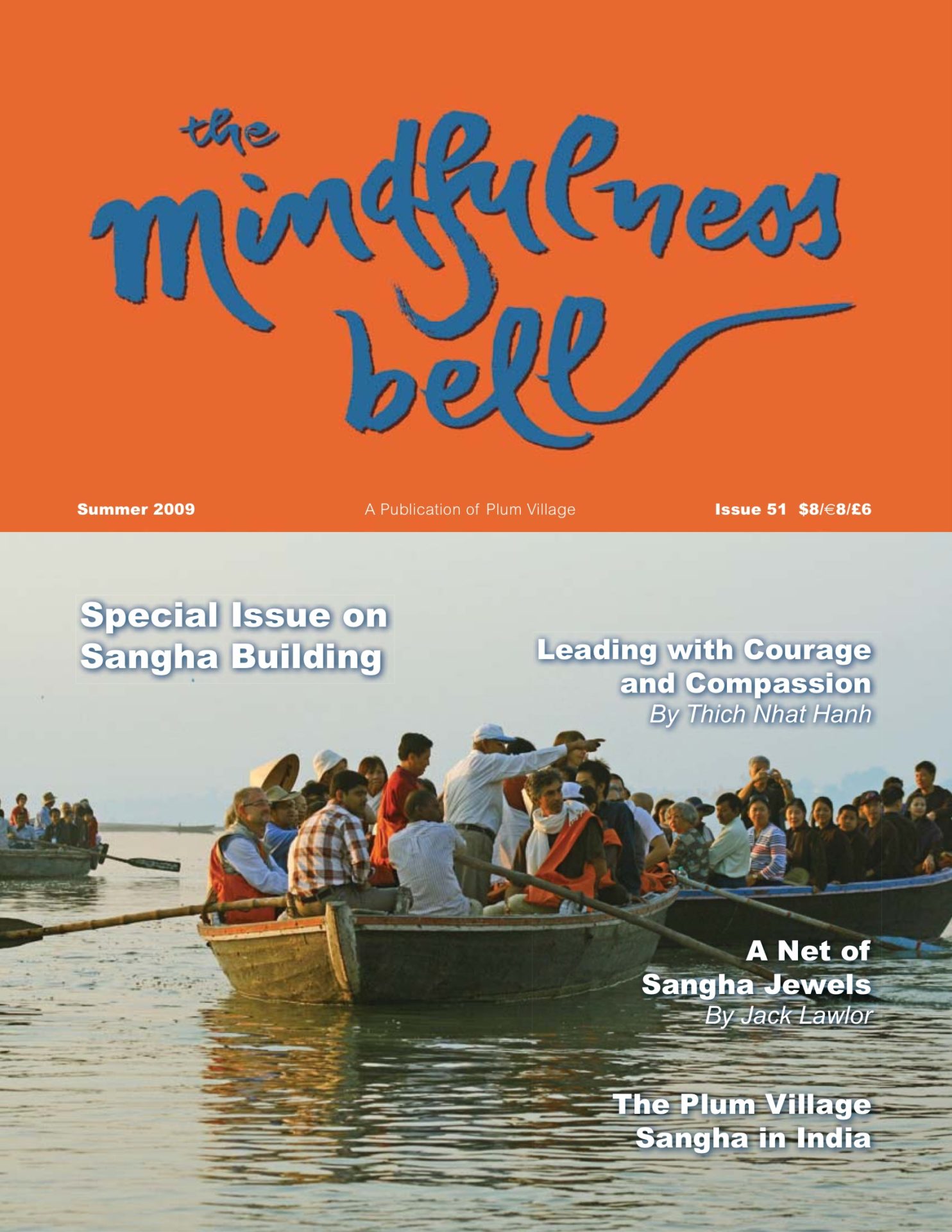By Brian Kimmel
I have found the practice of deep listening, both being heard and hearing others, to be very effective in dealing with the stresses and pressures of lay life. It takes effort to be present with our own suffering. We want so much to be happy, and yet often we aren’t doing the things we need to do in order to make happiness possible for ourselves.
When others listen deeply to us,
By Brian Kimmel
I have found the practice of deep listening, both being heard and hearing others, to be very effective in dealing with the stresses and pressures of lay life. It takes effort to be present with our own suffering. We want so much to be happy, and yet often we aren’t doing the things we need to do in order to make happiness possible for ourselves.
When others listen deeply to us, we are better able to listen deeply to ourselves and to find answers to questions such as, “What do I need in order to support my practice, and to remain safe, solid and free?”
An Intimate Circle
Deep listening meditation is part of our Tuesday Night Sangha in Las Vegas. We offer members an opportunity to speak about what is in their hearts. We’ve had many people share intimate things about their lives, feeling safe in the support of the Sangha and the atmosphere of harmony the Sangha creates. Many people have cried in our circle and afterwards have felt so relieved and grateful to have had the opportunity to tell others how they feel. They also enjoy offering deep listening to others.
At each Sangha gathering, we start the evening with sitting and walking meditation. Then we may listen to a talk, sing songs, or introduce ourselves. We always end the evening with deep listening.
We invite a sound of the bell to start the session of deep listening. Whoever would like to share joins their palms together. The rest of the group joins their palms to acknowledge them. This is a vow we offer, a promise to allow them the space to be heard. We vow, silently, not to cross-talk or interrupt anyone as they are speaking, and then allow at least a few breaths when they are finished before the next person shares. To conclude each sharing, the person speaking joins their palms to express their gratitude to the attention that has been offered.
Getting Out of the Way
Deep listening is about healing and transforming whatever suffering is in our heart and store-consciousness. One important aspect of deep listening is allowing what is said to come from emptiness and return to emptiness. We don’t want to be the bearer of another’s suffering. To do deep listening effectively, we must listen and invoke the heart of Avalokita, the Bodhisattva of Deep Listening and Compassion. We listen with compassion and nonattachment. If we listen deeply to what is being said, our understanding transcends words.
People often attach meanings, views, or judgments to what is being said. We may not even hear the other person. We may only hear our own thoughts and perceptions. We only think about ourselves—what we are going to say or how we will respond.
To listen deeply, we must get out of the way. We must give our full attention to the person who is speaking. Even if the person is silent, our attention remains with them. I’ve often suggested the practice of saying the person’s name silently in order to keep our mindfulness on them, and to keep our own thoughts and feelings from wandering aimlessly.
We need to be calm in body and mind in order to listen. That is why sitting, walking, and singing precede deep listening. Deep listening is a meditation and takes practice. We learn through experience how to be better listeners.
Brian Kimmel, True Lotus Concentration, lives in Las Vegas, Nevada and has supported mindful living in Nevada and Utah since 2004. He works as a massage therapist, musician, and inspirational speaker.

